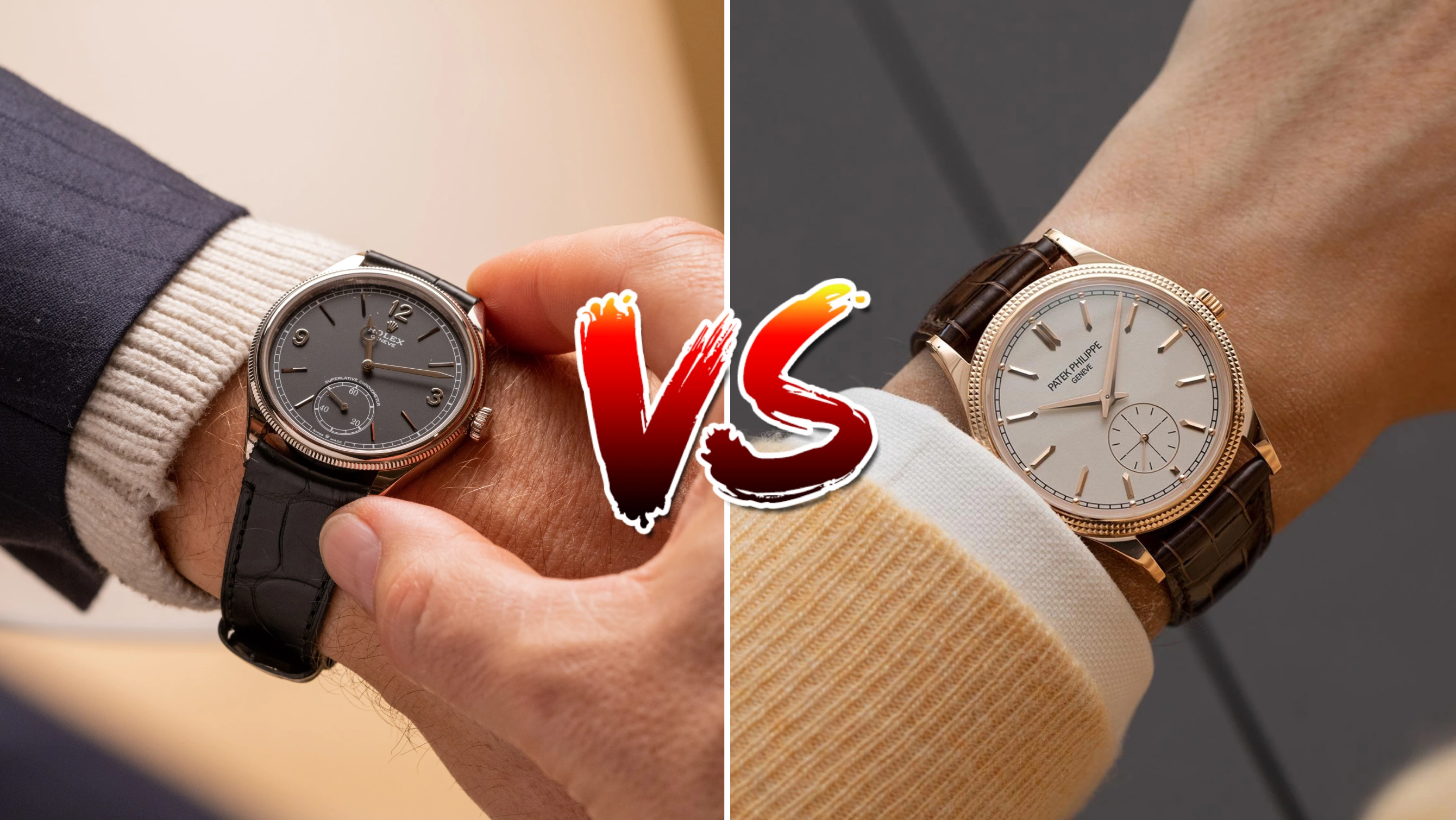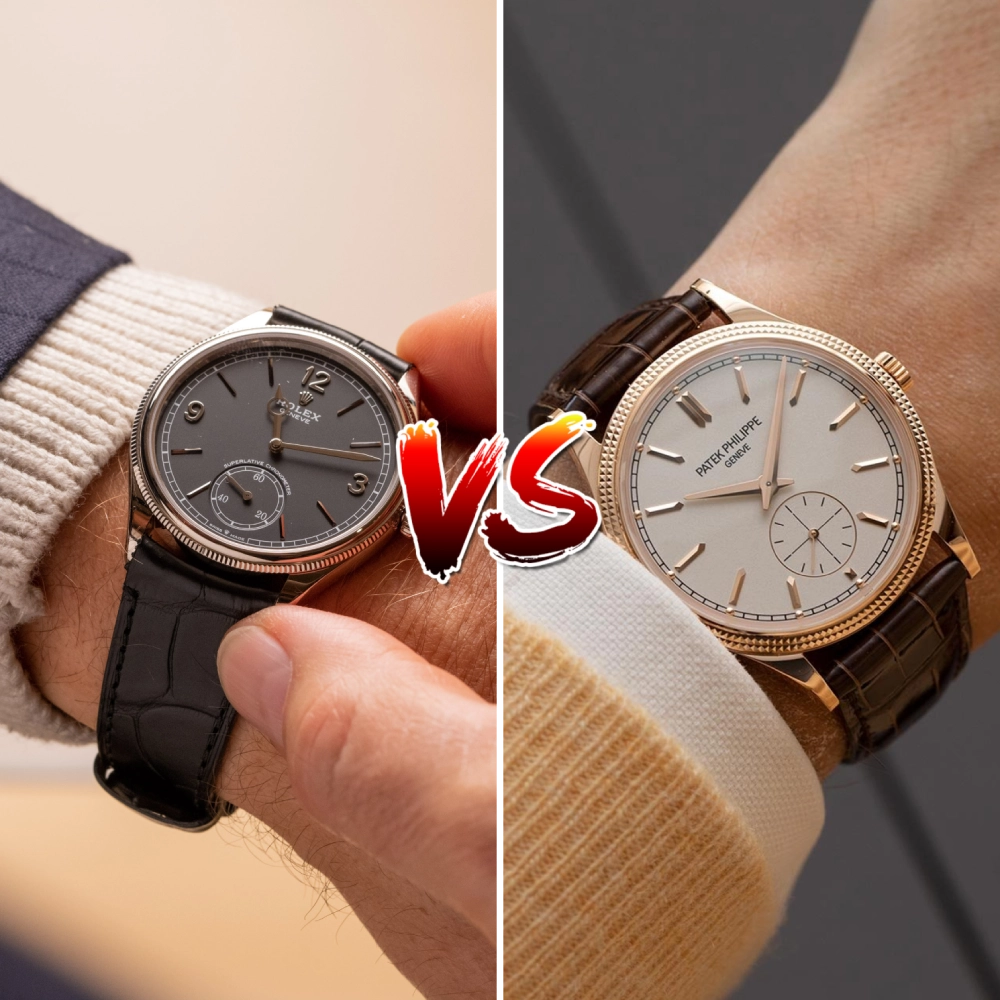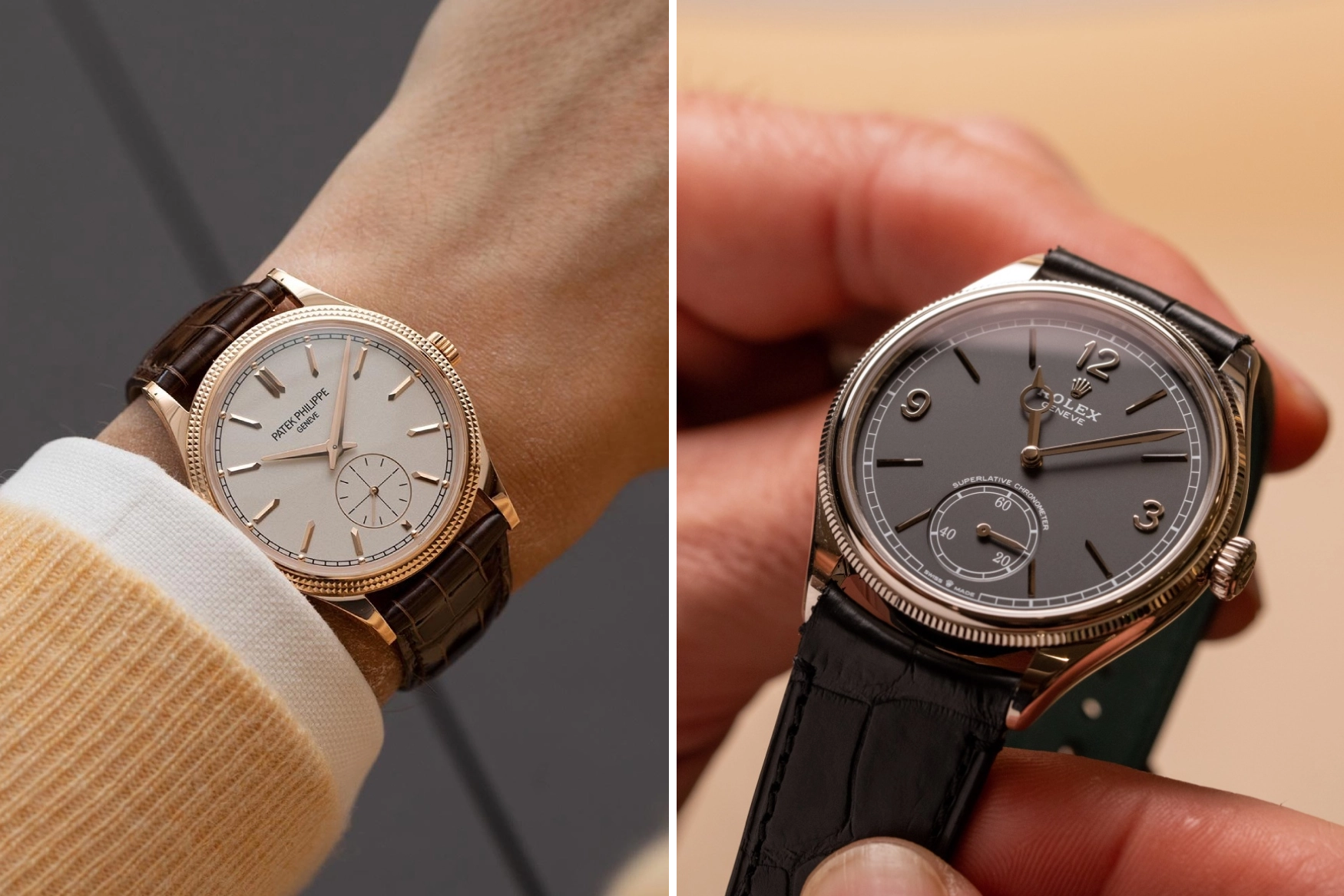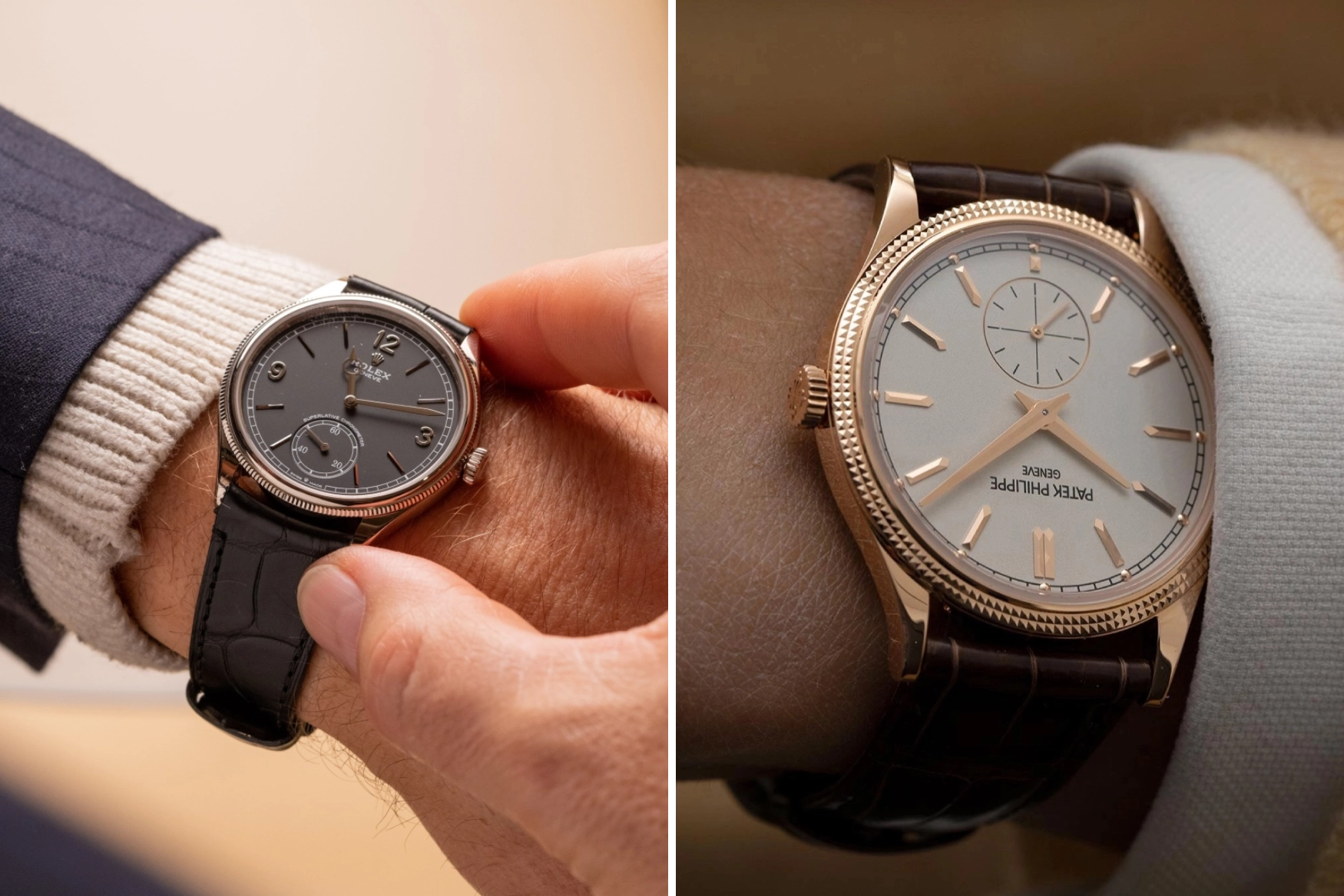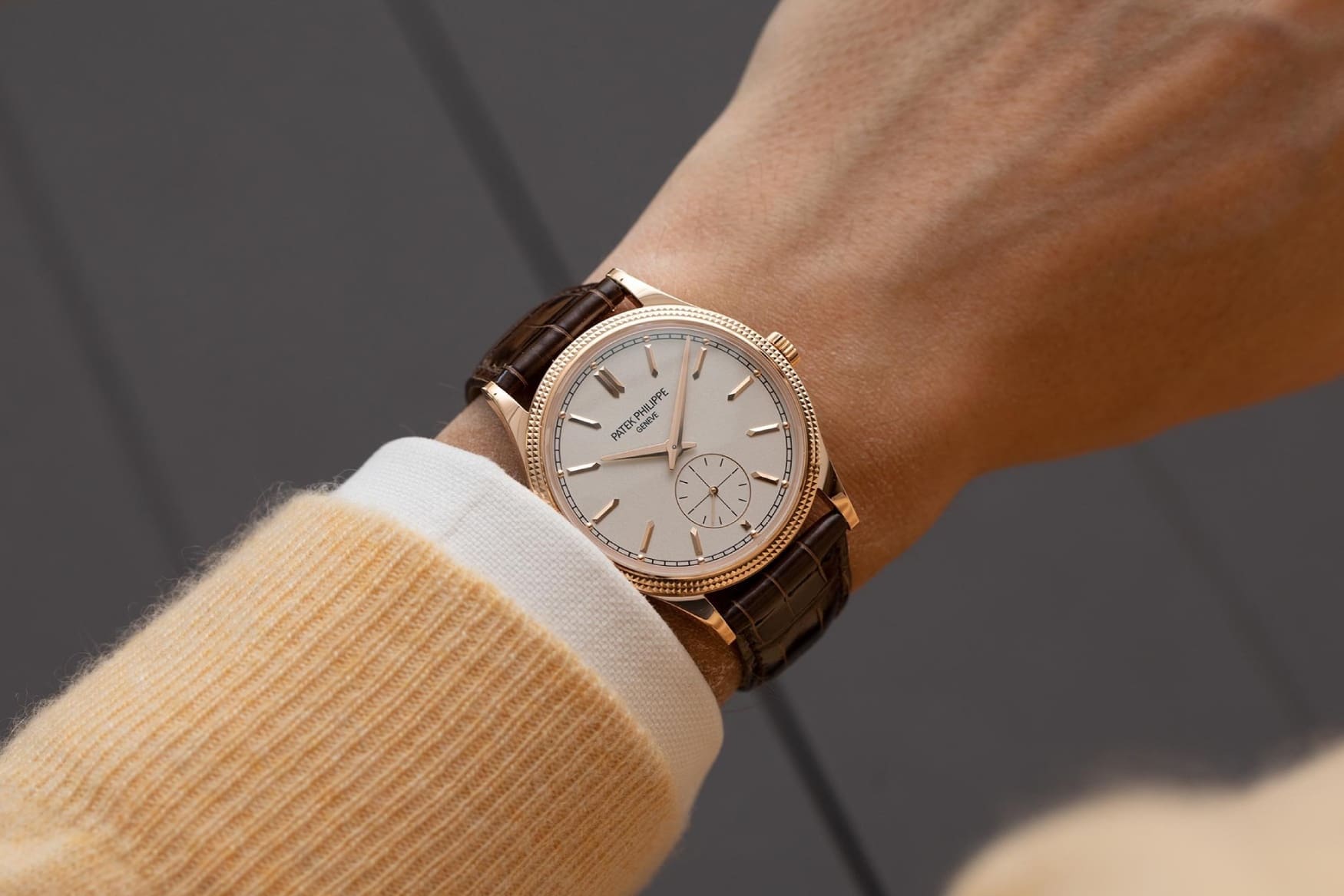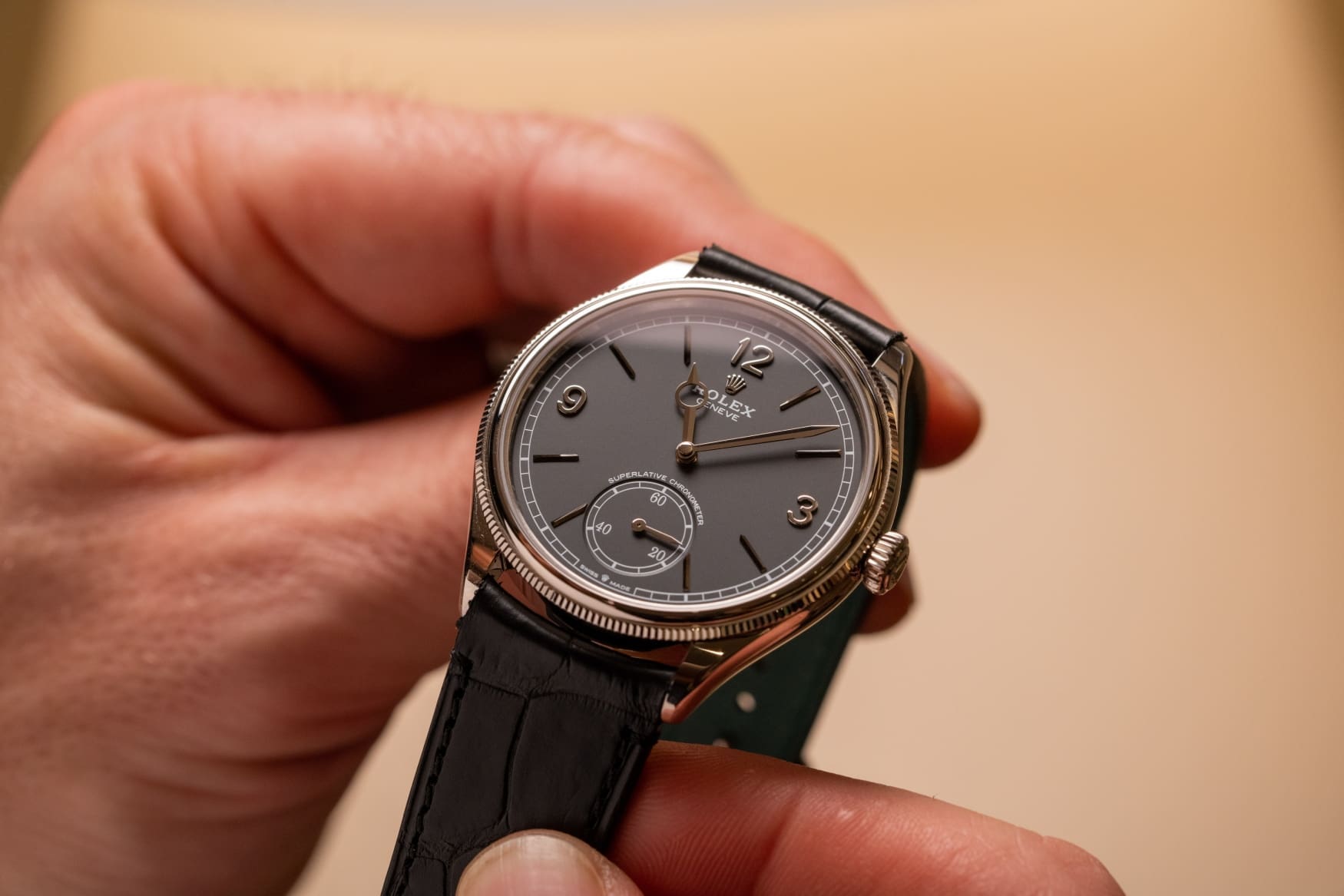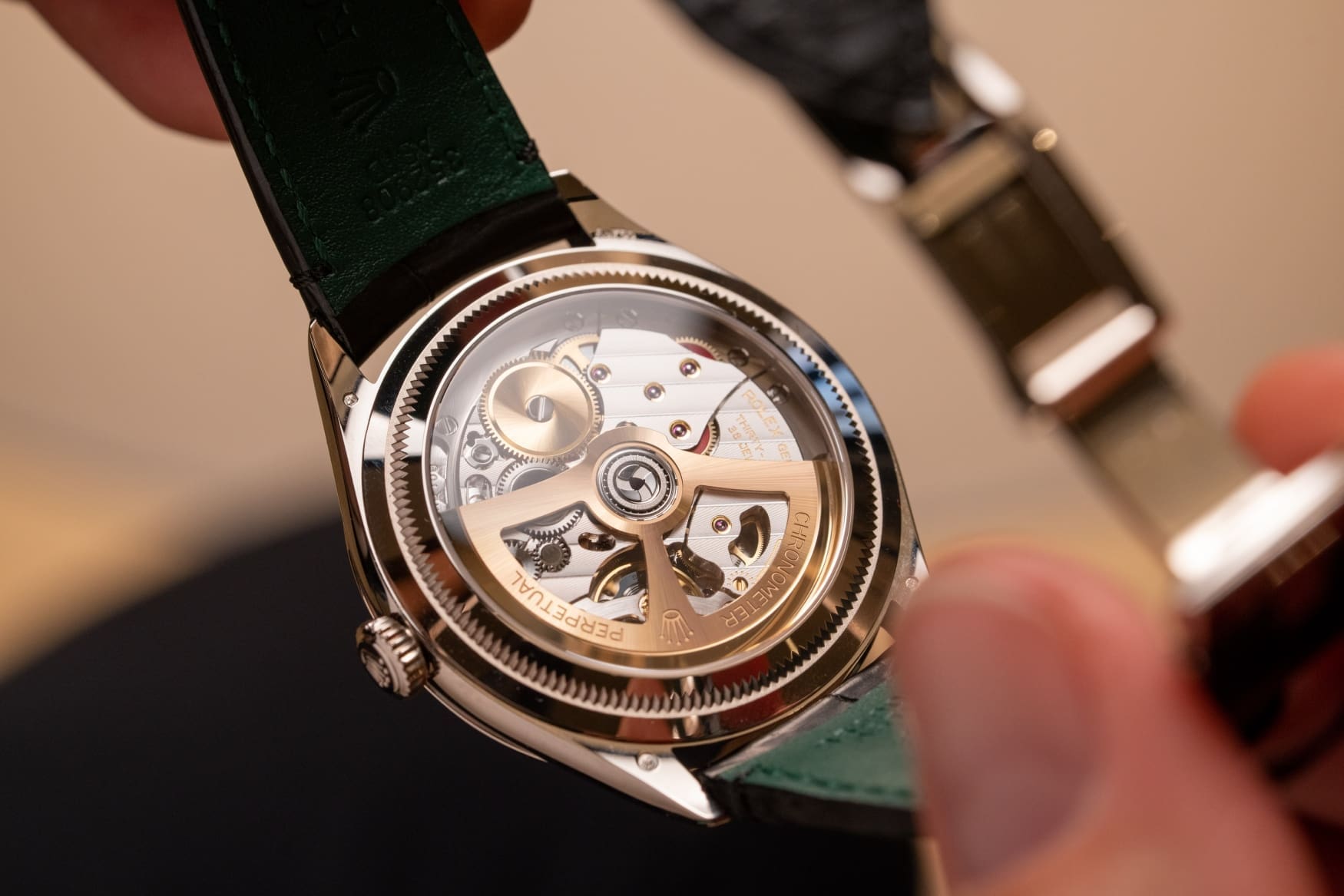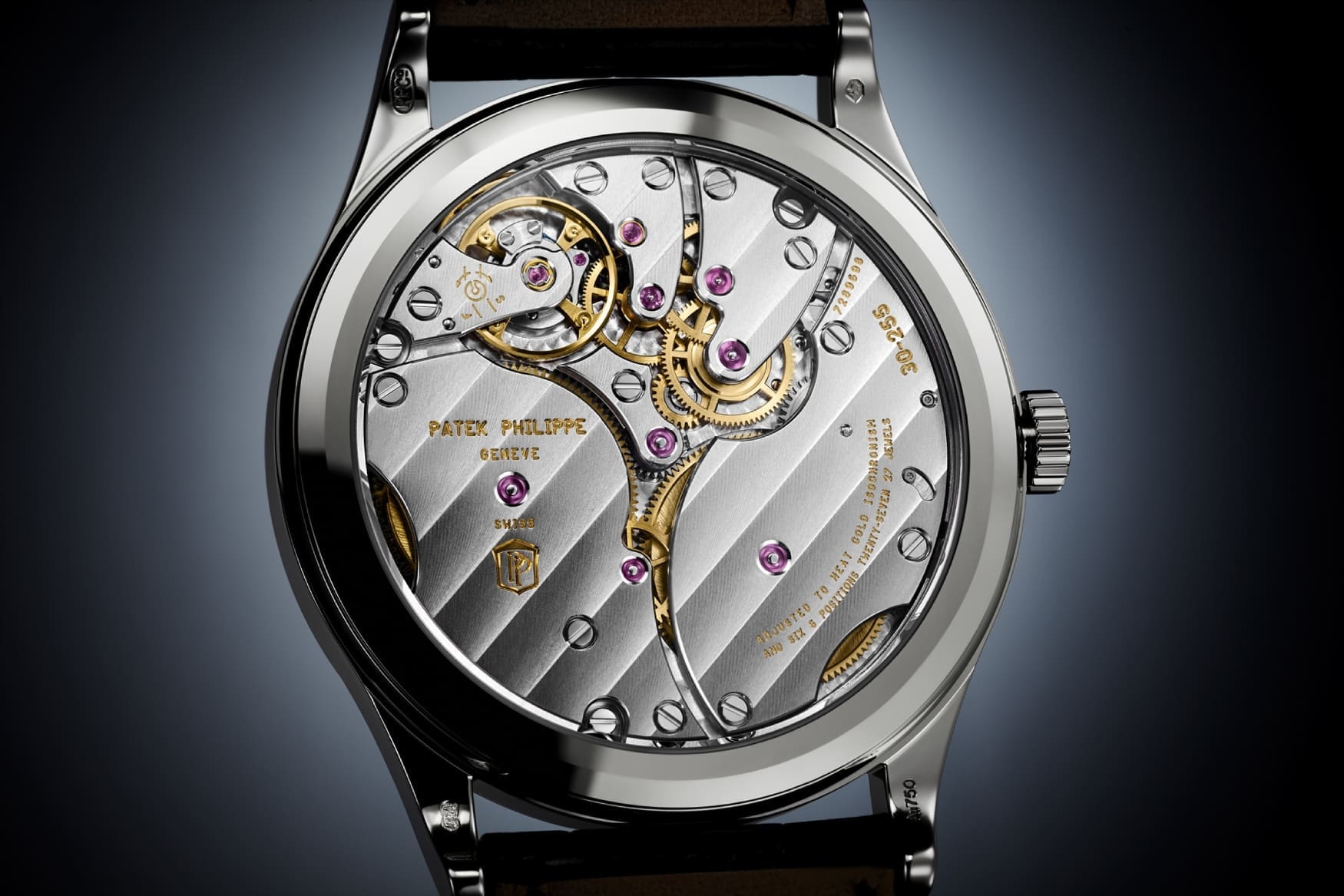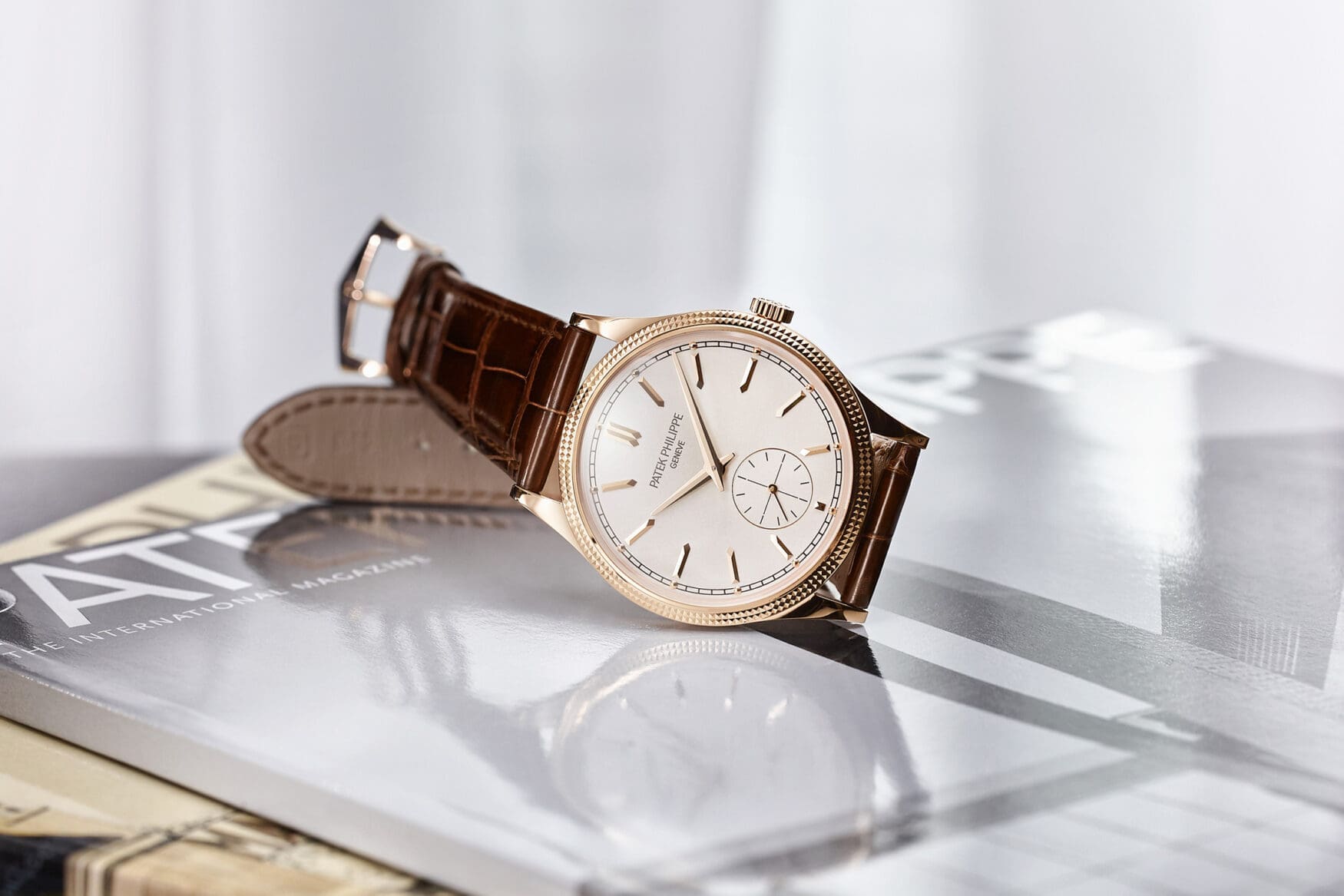VERSUS: Is the Rolex Perpetual 1908 a Calatrava-killing value proposition?
Borna BošnjakEveryone was expecting Rolex to finally show some love to the Cellini line which, although by no means weak, just lost appeal as time went on. Not many expected the crown to show up to Watches & Wonders 2023 with a brand new collection however, which the Perpetual 1908 is the founding member of. As unexpected as it may have been, its subtle fluting around the sloping bezel, applied Arabic numerals and a quirky hour hand complemented the brand-new calibre 7140, put on display via the sapphire caseback. All of these features pointed to the fact that Rolex was serious about being more than just a brand known for unattainable steel, sports pieces – now they could have unattainable dressy watches in the catalogue, too.
Naturally, any Rolex release attracts plenty of attention, and much of the crowd, including myself, were reminded of the Patek Philippe Calatrava Clous de Paris released a few years ago – need I remind you that it won our “darkest horse of the fair” award amongst fierce competition. Whether it was for its similarly intricate bezel or the fact that it’s also a simple, time-only watch from one of the world’s most recognised watch manufacturers, there are undeniable similarities between the two. With the Rolex coming in at more than A$10,000 less and seemingly offering a lot of the same features, it made me wonder whether Rolex was setting its sights on the dress watch icon – here are my thoughts.
| Brand | Patek Philippe | Rolex |
| Model | Calatrava Clous De Paris | Perpetual 1908 |
| Reference Number | 6119R-001 | 52508 |
| Case Dimensions | 39mm (D) x 8.08mm (T) x 46.9mm (LTL) | 39mm (D) x 9.5mm (T) |
| Case Material | 18k rose gold | 18k yellow gold |
| Water Resistance | 30 metres | 50 metres |
| Crystal(s) | Sapphire front and back | Sapphire front and back |
| Dial | Grained silver | White with matte finish and applied numerals |
| Strap | Alligator with rose gold pin buckle | Alligator, green calfskin lining with yellow gold folding clasp |
| Movement | Calibre 30-255, in-house, manually wound | Calibre 7140, in-house, automatic, Superlative Chronometer |
| Power Reserve | 66 hours | 66 hours |
| Functions | Hours, minutes, small seconds | Hours, minutes, small seconds |
| Availability | Now | Now |
| Price | A$46,650 | A$31,100 |
Common ground – dress-oriented pieces from the two strongest brands in the world
Not only is Rolex the most recognisable watchmaker, but one of the most recognisable brands in the world, period. Any watch from the crown is likely to attract attention and gain extra favour simply for the name on the dial. Patek Philippe is arguably in the same spot, though certainly not as renowned, has enjoyed as much success being name-dropped in raps and spotted on the wrists of celebrities. Both of these watches are 39mm in diameter, slightly larger than very classical dress pieces, in precious metal, and with intricately designed bezels. Both feature well-finished, high-end movements and naturally, both will probably be difficult to obtain.
Where each stands on its own – entry level vs crème de la crème
Admittedly, this particular Calatrava reference is not the most basic, but its features and case finishing align so perfectly with the Perpetual 1908, it just had to be this one. In the Patek Philippe catalogue, filled with all sorts of complications weird and wonderful, the Calatrava is the first step to greatness, preceding perpetual calendars, split-seconds chronographs, and minute repeaters. Despite it serving as the “approachable” watch in the collection, it’s finished to absolute perfection, and it somehow seems that it’s just meant to give you a taste of the full Patek Philippe capabilities to coax you into whatever’s next.
The Perpetual 1908 isn’t the most expensive piece in the collection – that honour goes to the blinged-out, platinum-cased stuff – but as far as the regular stuff goes, it’s meant to represent the very best the crown can do and be the be-all-end-all dress watch. However, its case is still clearly Oyster-derived, in fact the entire watch is inspired by a 1931 Oyster Perpetual model, meaning that it’s inherently sportier than the Calatrava. Applied Arabics at 3, 6 and 9 make it a little more casual too, as opposed to the Patek’s supremely elegant stick indices.
Finally – the movements. Let’s start with the new kid on the block. Rolex’s new 7140 calibre is thinner and more dressed up than previous calibres at an impressive 4.05mm in height. The thin, flat Syloxi hairspring and a super-efficient Chronergy escapement account for the impressive performance despite the reduction in thickness, though they’re not as notable due to the visual impact of the 1908’s movement. It’s a Rolex with a display caseback! And what a lovely sight it is – polished screw heads and a nicely solarised ratched wheel contrast against the côtes de Rolex, the brand’s own take on the classic striping method. However, as nice as the finishing is, there are some shortcuts and evidence of a machine being involved. For one, the chamfers are razor-thin and applied only on the balance bridge and balance-side of the barrel bridge. Those gold chatons? Well, they’re actually machined grooves that have been gold-plated. Pretty, but a bit of a cop-out.
Should you just quickly run your eyes over the Calatrava’s movement, it may seem less complex and impressive, though I assure you it is not. Sporting twin barrels, the cal. 30-255 PS was a brand new introduction alongside the launch of the 6119, and that’s obvious with the way it beautifully fills out the caseback. The large bridges flow so organically, dotted with countersunk, black-polished screws and pink jewels, with simply stunning anglage running their entire length – even some of the wheels that are mostly hidden feature bevelled spokes. The twin-bridge assembly suspending the going train is especially beautiful, giving a manually-wound, time-only movement the depth that they sometimes lack. One notable omission is that of inward angles, which admittedly difficult to create, separates the fully hand-finished work of few independents to the likes of even Patek Philippe, employing a machined-but-hand-finished approach.
The verdict and my pick
Being completely honest, I adore the look of the new Perpetual 1908, and especially so in its white dial, yellow gold variant. The quirky round hour hand and 3-6-9 indices are just the right side of vintage-inspired in a modern piece – and yet, it doesn’t win this battle for me. The Calatrava 6119R is a stunning take on an iconic piece, and the Clous de Paris pattern of the bezel, combined with the gorgeous movement wins it for me. The fact that the design is directly derived from the Calatrava 96, which is in my opinion among the most beautiful watches ever made, likely has something to do with my decision. It’s worth mentioning that the Calatrava isn’t perfect, however. At 39mm, it’s too big for the type of watch it’s trying to be, and the Rolex is guilty of this too, but nevertheless wins this battle. To answer the question in the title, I don’t think the Perpetual is a Calatrava-killer, though I also don’t believe it was conceived to be either.




